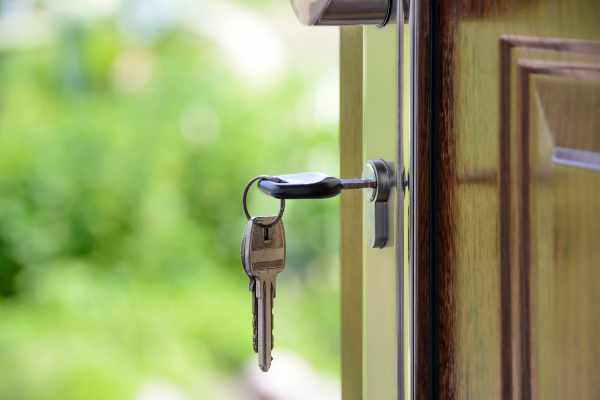Buying a fixer-upper can be an exciting opportunity to get a property at a lower price and transform it into your dream home. However, it comes with its challenges. Not every property is worth the investment, and it’s valuable to know which renovations will add value and improve the home’s livability. Before you buy, it’s crucial to have a clear renovation plan in mind to avoid being overwhelmed by costs or complications. In this article, we’ll cover what to look for in a fixer-upper before you buy which helps you make a smart investment.

What to Look for in a Fixer-Upper
1. Bathroom Updates for Long-Term Value
One of the first areas you should focus on when buying a fixer-upper is the bathroom. Bathrooms are essential spaces in any home, and their condition can significantly impact the overall feel and value of the property. An outdated or poorly functioning bathroom makes daily living inconvenient and can also turn off potential buyers if you decide to sell the home in the future.
Older homes may have bathrooms with outdated fixtures, inefficient plumbing, or layouts that don’t meet modern needs. Renovating this space can give your home a fresh, modern feel and improve functionality. For larger projects like replacing fixtures, upgrading plumbing, or adding features like walk-in showers, consider hiring a bathroom remodeling company. Professionals can guide you through the process, ensuring that the renovation goes smoothly and fits within your budget.
Renovating the bathroom can also help improve the home’s resale value. Many buyers are willing to pay a premium for homes with updated bathrooms, as it saves them the hassle and cost of renovating later. In fact, bathroom remodels often offer one of the highest returns on investment when selling a home.
2. Kitchen Overhauls for Modern Living
When considering a fixer-upper, the condition of the kitchen should be a priority. Many older homes have outdated kitchens with old appliances, cramped layouts, and insufficient storage space.
Upgrading the kitchen improves the functionality of your home and significantly boosts its market value. Buyers are often drawn to homes with modern, updated kitchens, which makes this renovation worth every penny. Consider replacing old countertops with more durable and stylish materials, like quartz or granite, and updating cabinetry to provide more efficient storage. Don’t forget to install energy-efficient appliances, which are a selling point for future buyers and can save you money on utility bills.
A kitchen overhaul doesn’t have to break the bank. Focus on making it functional and aesthetically pleasing. Simple updates like new cabinet hardware, a fresh coat of paint, or a modern backsplash can transform the space without a full renovation.
3. Flooring: A Quick Transformation
When walking into a home, the condition of the flooring is one of the first things people notice. Old, damaged, or outdated floors can make even a spacious home feel run-down. That’s why replacing flooring is often one of the most impactful renovations you can do in a fixer-upper.
If you’re lucky, the home may already have hardwood floors that just need refinishing. Hardwood is highly desirable for its durability and timeless appearance. If the home doesn’t have hardwood, consider installing it, especially in the main living areas. If hardwood is outside your budget, luxury vinyl plank or laminate flooring can be excellent alternatives. They’re both durable, water-resistant, and can mimic the look of real wood at a fraction of the cost.
Transforming your home with the perfect flooring solution changes the entire feel of a home, making it feel newer and more cohesive. It’s one of the quicker fixes that has a big payoff in terms of appearance and property value.
4. Roofing and Foundation Repairs for Structural Security
While cosmetic updates are exciting, the structural integrity of the home should be at the top of your list. A beautiful bathroom or kitchen won’t mean much if the house has major issues with its foundation or roof. These are essential systems that need to be in good condition to ensure the long-term stability and safety of the home.
Before purchasing a fixer-upper, it’s crucial to get a professional inspection of the roof and foundation. Roofing issues, like missing shingles or water damage, can lead to expensive repairs if not addressed early. Similarly, cracks in the foundation or uneven settling are red flags that need to be assessed by a structural engineer.
Repairing the roof or foundation might not be as glamorous as other renovations, but it’s necessary to prevent bigger problems down the road. Think of these repairs as an investment in the security of your home. Fixing structural issues early on can also save you from costly repairs and even safety hazards in the future.
5. Electrical and Plumbing Updates for Safety
Older homes often come with outdated electrical systems and plumbing that don’t meet modern safety standards. Before making any cosmetic changes to a fixer-upper, it’s essential to ensure that the electrical wiring and plumbing are up to code. Faulty wiring can lead to electrical fires, and old pipes may cause leaks or water damage.
Updating the home’s electrical and plumbing systems isn’t the most visible renovation, but it’s one of the most important. You’ll want to hire licensed professionals to inspect and upgrade these systems if necessary. Replacing old knob-and-tube wiring or lead pipes ensures that your home is safe, functional, and ready for modern living.
6. Open-Concept Layout for Modern Living
Many older homes have closed-off layouts with separate rooms for dining, living, and cooking. While this was the norm in the past, today’s homeowners often prefer open-concept living spaces that allow for better flow and interaction between rooms. If the fixer-upper you’re considering feels cramped or outdated, consider creating an open floor plan by removing non-load-bearing walls.
Opening up the space between the kitchen, dining room, and living area can make the home feel larger, brighter, and more inviting. It also allows for better use of natural light and creates a more flexible layout that can be customized to your needs. An open-concept design is not only practical for modern living but also a feature that many buyers look for when purchasing a home.
Buying a fixer-upper can be a rewarding investment, but it requires careful planning and prioritization. When you understand what to look for in a fixer-upper—key renovations, addressing structural and safety concerns—you can transform an outdated property into a comfortable and valuable home!


